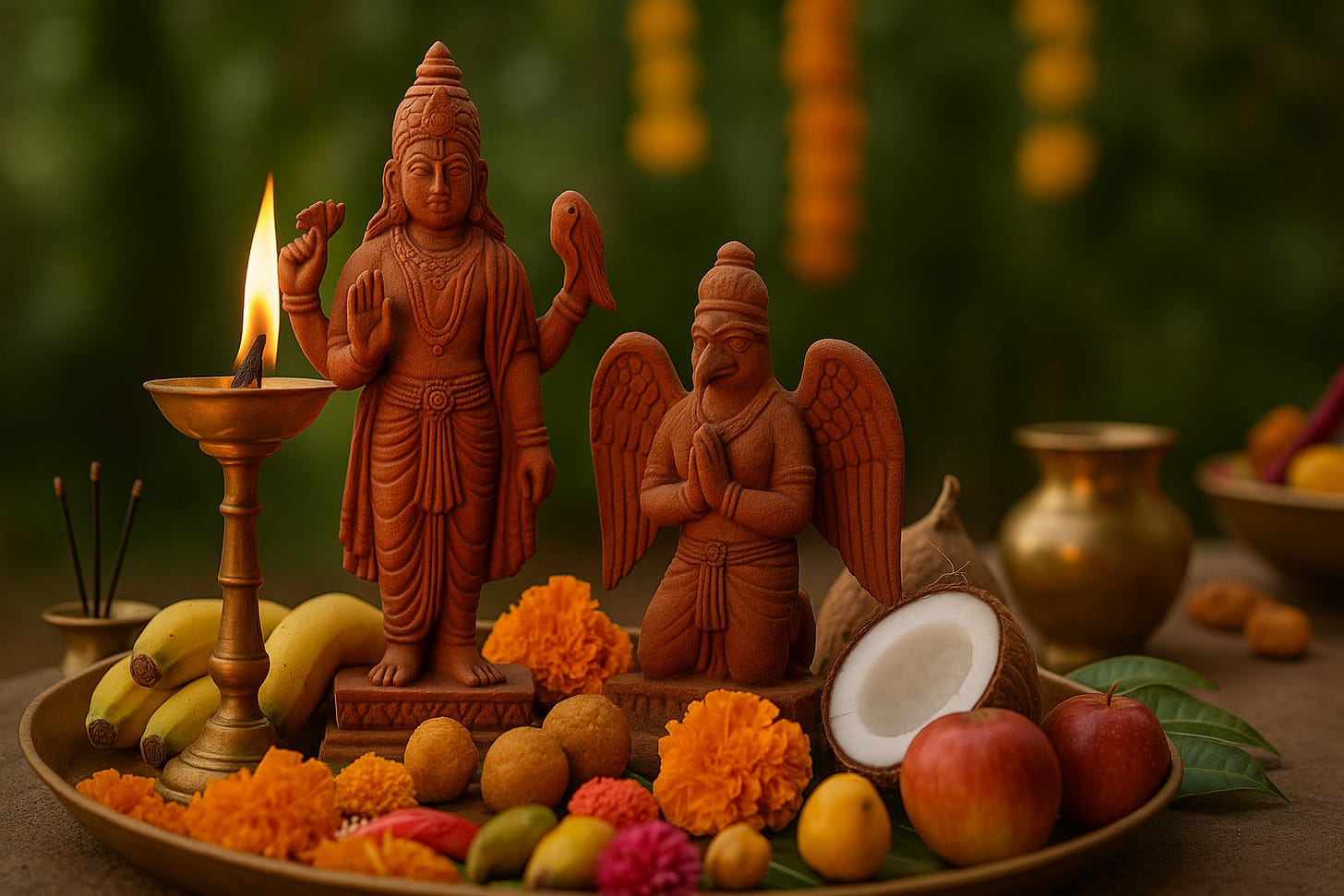Jivitputrika (Jitiya) Vrat 2025: Timings, Significance, Full Puja Vidhi, Aarti, Do’s & Don’ts, and Sacred Places to Visit
2025 Dates & Muhurats
Festival span (3 days):
September 13 (Saturday) – Nahay-Khay
September 14 (Sunday) – Nirjala Vrat / Ashtami
September 15 (Monday) – Paran (fast-breaking)
Ashtami Tithi (Delhi reference): Begins September 14, 5:04 AM • Ends September 15, 3:06 AM
Typical Paran window: September 15 morning (~6:10–8:32 AM). Local timings may vary - always check your regional panchang.
Significance of Jivitputrika Vrat
Jivitputrika Vrat, also called Jitiya, is observed mainly by mothers for the long life, health, and prosperity of their children. The vrat is rooted in the legend of King Jimutavahana, who sacrificed himself to Garuda to save another’s child. His compassion and selflessness became a symbol of protection and maternal devotion.
It is especially popular in Bihar, Jharkhand, Uttar Pradesh, and Nepal, where it is deeply woven into the cultural fabric of Maithil, Bhojpuri, and Tharu communities.
Complete Puja Vidhi
Day 1 – Nahay-Khay
Take a purifying bath early in the morning, preferably in a river or ghat.
Prepare and consume a simple sattvic meal (free from onion, garlic, and non-vegetarian food).
Take a vow (sankalp) to observe the vrat.
Day 2 – Nirjala Vrat (Ashtami)
Begin the day with an early bath and wear clean, traditional attire.
Purify the puja space with Gangajal, incense, and lamps.
Place an image or idol of King Jimutavahana on the altar. Some traditions also include symbolic figures of Garuda or jackals.
Perform the Jivitputrika Vrat Katha recital, narrating the story of Jimutavahana.
Offer fruits, flowers, rice grains, sindoor, and sweets during the puja.
Observe a strict nirjala fast (without food or water) until the next day.
Day 3 – Paran
Break the fast the next morning, after the Ashtami Tithi ends, within the designated paran muhurat.
Traditionally, paran begins with simple foods, such as fruits or special dishes like pumpkin kheer.
Aarti and Mantras
There is no single standardized aarti for Jivitputrika Vrat. Families usually perform a brief aarti dedicated to Jimutavahana, Lord Vishnu, or Lord Shiva, depending on family tradition. The sequence often includes:
Lighting of the lamp and remembering Lord Ganesha.
Aarti with flowers and lamps before Jimutavahana or chosen deity.
Recitation of the Jivitputrika Katha.
Concluding prayers for peace and blessings.
Puja Samagri Checklist
Kalash (pot)
Diya (lamp) and agarbatti (incense)
Roli, sindoor, haldi, and rice grains
Fresh flowers and fruits
Sweets for naivedya
Clean red or yellow cloth for the altar
Idol or picture of King Jimutavahana
Betel nuts, mustard oil, and other regional items as per family tradition
Do’s and Don’ts
Do’s
Keep the nirjala fast with sincerity (if health permits).
Recite or listen to the Jivitputrika Katha.
Maintain a sattvic lifestyle during the vrat.
Break the fast strictly within the paran window.
Don’ts
Avoid breaking the fast before paran muhurat.
Do not consume prohibited foods on Nahay-Khay.
Avoid arguments, negativity, or any form of impure conduct.
If unable to observe nirjala due to health issues, adapt respectfully after consulting elders.
Regional Practices
Bihar, Uttar Pradesh, Jharkhand: Three-day tradition with community gatherings and riverbank rituals.
Nepal: Ritual baths in rivers, offerings of khar grass, and cultural songs and dances like Jhamta.
Sacred Places to Visit During Jitiya
Many devotees combine the vrat with pilgrimages to sacred sites:
Kashi Vishwanath Temple, Varanasi: A Jyotirlinga of Lord Shiva on the banks of the Ganga.
Varanasi Ghats (Dashashwamedh, Assi): Famous for Ganga snan and evening aartis.
Baba Baidyanath Dham, Deoghar (Jharkhand): A revered Jyotirlinga temple.
Pashupatinath Temple, Kathmandu (Nepal): An ancient and highly significant Shiva temple.
Janaki Mandir, Janakpur (Nepal): Dedicated to Goddess Sita, closely associated with Mithila culture.
September 13: Nahay-Khay (bath + sattvic meal).
September 14: Nirjala Vrat, puja, and Jivitputrika Katha.
September 15: Paran (breaking the fast) after Ashtami ends.


